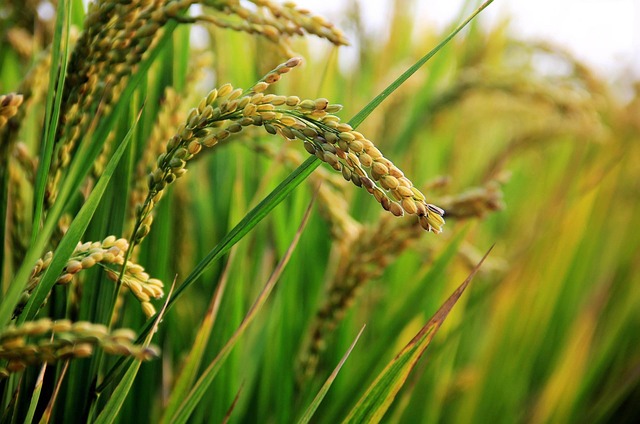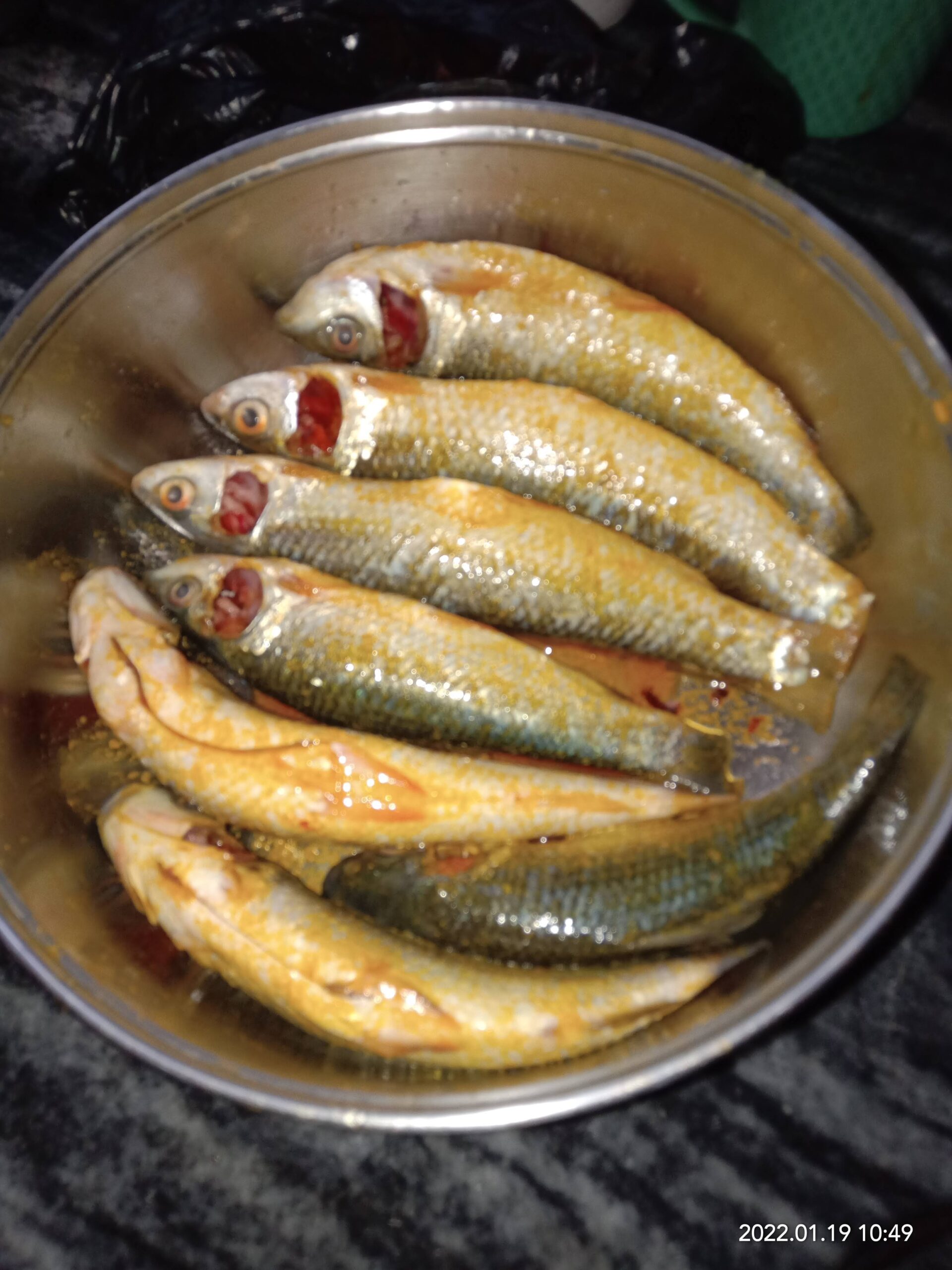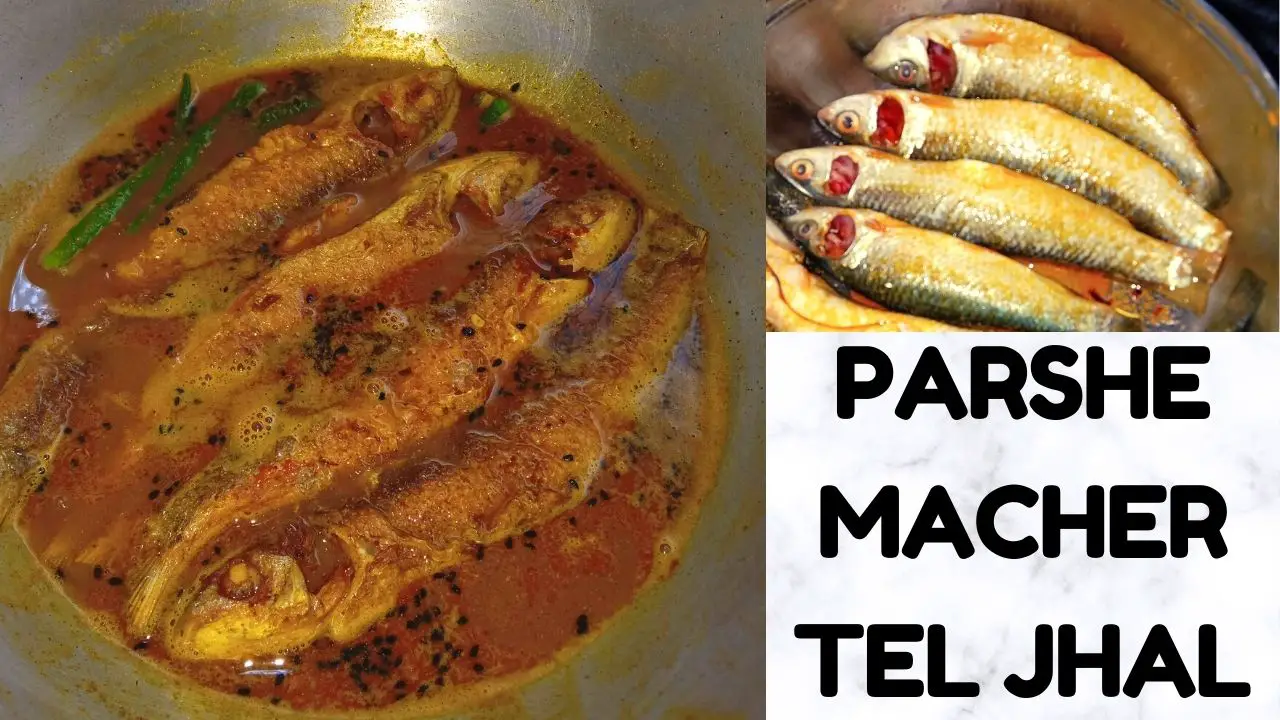“Parse” refers to mullet fish, “Macher” refers to fish, and “Tel Jhal” refers to gravy or curry.
Fish An Identity of Bengalis
Bengalis and their penchant for fish require no introduction. They eat to live and spend the majority of their earnings on food. These aren’t quips, but rather the harsh reality of Bengalis. Without fish, a Bengali meal is incomplete. Bengalis adore fish and are frequently referred to as a Maache-Bhaate-Bangali, which translates as “rice and fish make a Bengali.

Bengalis, the world’s third-largest ethnic group, live in Bangladesh as well as the Indian states of West Bengal, Tripura, and Assam’s Barak Valley. Their total population is estimated to be around 240 million people, with a sizable global Bengali community. Bengalis eat fish at least once a day, no matter where they live.” Is there, however, an explanation for Bengalis’ love of fish?
People’s food habits reflect the geographic and climatic conditions of the land. It also has an impact on social and religious practises. In general, people in a region eat what is readily available to them. Bengal, located in the Ganges delta region, is crisscrossed by numerous rivers, including the Ganges, Padma, Meghna, Damodar, Mayurakshi, Teesta, and Rupnarayan. It is teeming with ponds and lakes that provide the populace with a diverse range of fish such as Rui, Katla, Pabda, Parse, Tangra, koi, Hilsa, pomfret, and Bhetki, as well as other sea creatures such as shrimp, prawns, and crabs.

Rice and fish are abundant in the riverine plain. As a result, fish is almost considered a secondary staple to be eaten with rice. Ponds are used for pisciculture in every village in Bengal. Fishing was once the primary activity of people who lived near the coast. According to Bengali literature, sculptures and paintings from the time period, fishing was one of the primary occupations of the people. Because of the fertile land and easy access to food and water, people have historically settled near rivers. Because the growing population of fish in any body of water renders it unusable. As a result, people began eating fish in excess, and some even turned it into a profession.
Habits eventually turn into tradition, and tradition turns into culture, which governs the behaviour of society as a whole. Now, if something becomes a part of your culture and you practise it since you were born, it never dies. Another reason for this obsession with fish is that it was historically Bengal’s primary source of protein. Fish is high in protein and has numerous health benefits.
Each item’s cooking style is distinct. Although food preparation styles and fish selection vary by region in Bengal, the main course is generally the same, with rice and fish playing a dominant role. Mustard oil’s distinct pungent flavour and aroma enhance its flavour.
Health Benefits of Eating Parse Mach (Mullet Fish)
Fish is an excellent source of lean protein, which is good for your heart. Eating one or two servings of fish as your protein each week can reduce your risk of heart attack by nearly one-third. This is due to the presence of heart-healthy omega-3 fatty acids, which help lower triglyceride levels while also reducing inflammation throughout the body and supporting brain health.

Fish omega-3s, also known as long-chain omega-3s, EPA and DHA, are extremely beneficial. However, this does not negate the fact that including fish in your diet has some drawbacks. Many fish species contain high levels of mercury, a dangerous contaminant that can harm the nervous system.
Pollution has only increased mercury levels in our oceans, lakes, and streams, and this mercury is consumed by fish and converted to methylmercury, a toxin. Fish at the top of the food chain consume other contaminated fish, increasing their mercury levels, which is why it’s best to eat smaller fish at the bottom of the food chain. Farmed fish, which you may believe is safer, are fed the same diet of growth hormones, antibiotics, and other foods that are not found in their natural habitat and should therefore be avoided.
The primary concern with fish and mercury is in infants and young children, whose developing nervous systems are especially vulnerable to the effects of mercury.
As a result, pregnant women and nursing mothers should exercise extreme caution when selecting the types of fish to eat. Experts advise pregnant women to avoid sea-water fish such as sword fish , tuna, and shark in favor of pond fish such as mullet fish, rohu, hilsa, kingfish, and others.
Fish oil is high in omega-3 fatty acids, which have been linked to a variety of health benefits. Omega-3 fatty acids have been linked to a variety of benefits, including:
- Combat inflammation and lower blood pressure
- Promote healthy skin and bone health
- Despite the fact that it is found naturally in fish, fish oil is most commonly consumed as a supplement.
What is Parse Macher Tel Jhal ?
So, what does Parse Macher Tel Jhal taste like ?
Simply put, one bite of this fish with a hand full of rice in your mouth will cause a food sensation. I’m not kidding! This food recipe is simply mind-blowing and deliciously rich in flavour and spices, the curry is medium spicy, and the fish is fried in the beginning and later cooked in an green chilli and cumin seeds paste that tastes simply delicious, basically it is a recipe I created to satiate your fish cravings and to bless your taste buds on any weekday, this fish curry definitely has a separate fan base, cooked in every Bengali household and on special Bengali occasions. Just seeing this fish curry being prepared in the kitchen will make your stomach growl and your mouth water. It’s absolutely delicious!
In Bengali cuisine, eating small fish is considered healthy. As a result, Parse Macher jhal is a popular dish. It is believed that if you eat the fish head, you will gain intelligence, and if you eat the fish eye, your vision will remain clear.
What is Parse Macher Tel Jhal ?
Tel Jhal is not about mullet fish curry drenched in oil (mustard oil in this case)! Tel Jhal is actually the oil secreted by the fish!This was very intriguing to me. In fact, I’ve started checking the Parse Mach every time I cook to see if it’s secreting oil or not! It’s true, I discovered! When the fish is sufficiently fresh, it secretes oil!

Ingredients
- 10 whole fish cleaned and dressed
- 2tsp green chilies paste (3 green chillies), as per your taste
- 2 tsp cumin powder (jeera powder)
- 2 green chillies slit in between
- 1/2 tsp turmeric
- 1 tsp Kashmiri lal mirch powder (for rich red colour)
- ½ tsp nigella seeds/ kalonji
- Salt as per taste
- 3 tbsp mustard oil/vegetable oil or any cooking oil of your choice
Health Benefits of Mustard Oil
Mustard oil is versatile and widely used throughout the world. In India, it is popularly known as Sarson ka Tel and is a staple in every kitchen. Mustard oil has a strong flavour that complements a variety of dishes. Not only that, but it has a plethora of health benefits.
However, with the scare of cholesterol and an increase in heart disease, many people have become wary of the type and quality of oil they consume on a daily basis. This has resulted in an increase in the sale of healthy oils like olive oil, sunflower oil, rice bran oil, and grapeseed oil, to name a few.
It is also worth noting that mustard is beneficial to diabetics because of its anti-inflammatory properties As a result, it is regarded as one of the best oils for use in diabetic recipes.
a) Cardioprotective Effects
- Mustard oil is a healthy edible oil that is low in SFA, high in MUFA and PUFA, particularly alpha-linolenic acid, and has a good LA: ALA ratio (6:5).
- There was a reduction in arrhythmias, heart failure, and angina in Myocardial Infarction (MI) patients who used mustard oil. As a result, mustard oil is regarded as a safe option for patients suffering from cardiovascular disease.
b) Reduces Coughs and Colds
- Mustard oil has been used to treat colds, coughs, and other respiratory illnesses and allergies since ancient times.
c) Anti-bacterial, Anti-fungal & Anti-carcinogenic Properties
- Glucosinolate, which is found in mustard oil and has antibiotic, fungicidal, and cancer-prevention properties, is used as a human health therapeutic. As a result, it protects us against colorectal and gastrointestinal cancers.
- Ally Isothiocyanate acts as an antifungal agent, preventing fungal growth and infection in food.
d) Strengthens Red Blood Cells
- Mustard oil is a good source of all the fats our bodies need to perform various biological functions as plasma, cell lipids, and cell membrane components.
- Mustard oil lowers cholesterol and improves red blood cell membrane structure (RBC).
e) Relief from Joint Pain & Arthritis:
- A massage with mustard oil on a regular basis can help relieve aching joints and muscles. Arthritis patients benefit from a mustard oil massage as well, thanks to the presence of Omega-3 fatty acids, which help to relieve stiffness and pain caused by arthritis.
Health Benefits of Green Chillies

Chillies are one of the most popular spices in Indian cooking.There is an enormous variety of chilli peppers, each of which serves a unique purpose in the cooking process. There are many different types of chillies, each with a different colour, origin, and level of heat. Red chillies are generally milder, whereas green chillies have a sharper and hotter kick. Despite the amazing flavours, aromas, and tastes that chillies provide in our cooking, they also have a surprising number of incredible health benefits!
- Excellent for a healthy diet.
Green chillies have no calories, making them the ideal spice ingredient for those on a low-calorie diet. They can also boost your metabolism by up to 50% for up to three hours after you eat, ensuring a healthy and fit lifestyle.
- Reduce your body temperature.
Green chillies contain capsaicin, which is known to lower body temperature by stimulating the cooling centre of the hypothalamus in the brain. As a result, people in warm countries around the world, such as India, continue to enjoy hot and spicy foods flavoured with chilli.
- Natural iron source
Add green chilies to your diet and you’ll never feel weak or tired due to a lack of iron again. If you have an iron deficiency, this is a great way to improve the taste of your meals as well as your overall health by consuming a natural source of iron.
- Maintain proper blood sugar levels.
Green chilies have been shown to balance blood sugar levels, which could be the solution to many diabetics’ diet problems as well as a more enjoyable and stable lifestyle.
- Boost your immune system
You can boost your immune system and fight common colds and sinus infections by including chillies in your diet.Capsaicin stimulates the mucous membranes of the nose and sinuses, increasing blood flow through the membranes and causing mucus secretion to thin.
- Pain reliever, digestive aid, and ulcer-prevention agent
The heat produced by chillies can be used as a pain reliever, a digestive aid, and, contrary to popular belief, to prevent ulcers. Green chillies contain a lot of dietary fibres, which can help you digest food faster.
Health Benefits of Nigella Seeds/ Kalonji

Each dish in India is incomplete without spices. In every kitchen, “Kalonji,” also known as black cumin, is a popular spice. It is also known as fennel flower, black caraway, nutmeg flower, and Roman coriander in English. It is a flavourful spice with a sweet and nutty flavour. Kalonji is a medicinal plant that has been used for thousands of years. It is used in a variety of ways, including Kalonji oil, roasted seeds, raw seeds, and so on.
1. Boosts memory
Ayurveda suggests combining Kalonji seeds with mint leaves to improve memory and prevent neurological disorders such as Alzheimer’s disease.
2. Helps control Diabetes
Kalonji is extremely beneficial in controlling blood sugar levels in type 2 diabetes. It is a long-term condition that affects how your body uses and regulates blood sugar. Diabetics can benefit from consuming Kalonji oil with black tea on an empty stomach.
3. Heart health
Kalonji is extremely beneficial to the heart. It protects your heart by lowering bad cholesterol levels in your body. To get the best results, drink Kalonji oil with milk on a regular basis.
4. It lowers inflammation.
Kalonji seeds contain anti-inflammatory properties that can be used to treat a variety of chronic inflammations. It is well-known for relieving joint pain by lubricating the joints. Ayurveda recommends taking Kalonji oil on a daily basis to reduce inflammation.
5. It regulates blood pressure.
A teaspoon of Kalonji oil can work wonders! Yes, it can help you control your blood pressure and break the recurrence cycle. Those with high blood pressure can take a teaspoon of Kalonji oil with lukewarm water.
Cooking Time
- Approx 30 minutes from end to end
Preparation
- Marinate the cleaned fishes with salt and turmeric powder
- Place a pan and put 2tbsp of mustard oil
- Fry the fishes in small batches till they are golden brown
- After frying all the fishes in the same pan put 1 tbsp of more mustard oil
- Add slitted green chillies and kalonji (nigella seeds)
- When they crackle, add all the above ingredients along with 2 tbsp of water and sauté them till oil separates.
- Add 1 glass of hot water
- As it starts boiling, add fried fishes into the curry (jhal)
- Simmer it for 5 minutes.
- Delicious parse macher tel jhal is ready to be served.
Serves
- 4 to 5 Persons
- Serve hot with steam rice
Takeaway:
This article explains how to make Parse Macher Jhal, which is a tasty Bengali fish curry recipe. Parse macher jhal / Bengali fish curry is a very simple but tasty dish prepared with minimal spices and using only basic ingredients, but the taste is quite delicious and delightful. I’m sure it can help you impress your family and friends! Do try at home.

